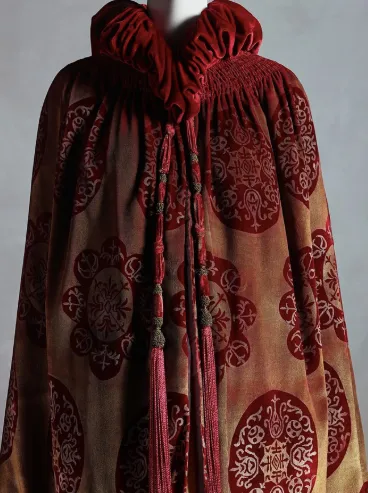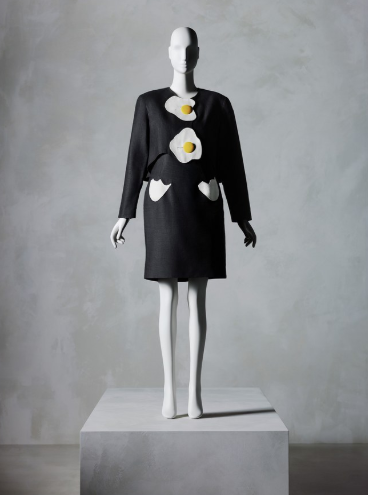Couture Covering 96 Years of Fashion Is Coming to the Met’s Costume Institute
A little-known couture collector has gifted the museum 165 items drawn from her collection of approximately 15,000 pieces
/https://tf-cmsv2-smithsonianmag-media.s3.amazonaws.com/filer/0b/e9/0be93d4a-c99e-43d4-8a18-9eba866cdf22/12_eveningdressmadeleinevionnetspring1931_2_copy.jpg)
Sandy Schreier’s couture collection features some 15,000 pieces, including three Valentino outfits once donned by Jackie Kennedy, a silver-mesh mini dress immortalized in Richard Avedon’s 1967 portrait of Twiggy, and the Jean Louis dress Rita Hayworth sported in the 1946 film Gilda. But as the octogenarian fashion historian tells the New York Times’ Vanessa Friedman, she has never worn any of these pieces herself: In Schreier’s words, “I always said, ‘If I owned a Picasso, it would not be on my back.’”
Come this November, dozens of fashions gifted by the Detroit native will go on view at the Metropolitan Museum of Art’s Costume Institute in an exhibition titled In Pursuit of Fashion: The Sandy Schreier Collection. According to a press release, the show is set to spotlight 80 of the donations, tracing the trajectory of 20th-century French and American couture while simultaneously exploring how Schreier amassed her impressive collection.
Speaking with Friedman, Jessica Regan, associate curator at the Costume Institute, describes the exhibition’s namesake as a “pioneer in seeing fashion as an art form that could be pursued and collected.” Today, Schreier boasts one of the most significant private couture collections in the world; per a 1999 profile by People’s Galina Espinoza, the trove spans the entirety of the 20th century, uniting designers from Yves Saint Laurent to Cristobal Balenciaga, Mary Quant, Michael Kors and Coco Chanel, and encompasses items previously loaned to the Met, the Hermitage and the Louvre.

The exhibition, scheduled to coincide with the New York cultural institution’s 150th anniversary celebrations, covers 96 years of fashion history. The earliest artifact on view will be a series of fashion illustrations from a 1908 Pochoir album, while the newest will be a 2004 Phillip Treacy butterfly hat.
Among the other outfits set for inclusion are a ruffled yellow evening dress designed by Jean Dessès during the early 1950s, an egg-adorned “breakfast suit” by Christian Francis Roth, a mermaid-esque Mariano Fortuny jacket dating to the 1920s or ’30s, and a silky red Maria Monaci Gallenga evening cape.
As Andrew Bolton, Wendy Yu curator in charge of the Costume Institute, says in the Met statement, “Sandy’s gift will introduce rare designs into our holdings, allowing us to tell a more nuanced story of fashion history through the achievements of its most innovative designers.”
Schreier started collecting at age three or four. At the time, her father worked in the Detroit branch of the Russeks department store, and wealthy clients, upon seeing how much the young girl loved clothing, began sending her their lightly used, and sometimes, even, never-worn couture.

“One Halloween, my mother insisted I wear one of the dresses as my costume and I had a huge temper tantrum and refused,” Schreier recalls. “Even then, I didn’t want anyone wearing them.”
Later in her career, Schreier began appearing on radio and television shows to share her thoughts on the value of fashion. This publicity led many prominent individuals to offer up their own creations or favorite wardrobe items, expanding the collector’s growing holdings and connecting her with such fashion and lifestyle icons as Twiggy, Quant, Vidal Sassoon, Calvin Klein and Edith Head.
Schreier says she decided to donate 165 pieces from her collection to the Met after realizing her family had little interest in carrying on the work.
“There was no doubt in my mind the Met has the best staff to take care of all my babies when they are away at permanent summer camp, and the broadest, best audience for them,” she concludes to Friedman. “I very much did not want them to end up at auction sold to some socialite who would buy them, and alter them to wear once to a party, and then get rid of them.”
/https://tf-cmsv2-smithsonianmag-media.s3.amazonaws.com/accounts/headshot/mellon.png)
/https://tf-cmsv2-smithsonianmag-media.s3.amazonaws.com/accounts/headshot/mellon.png)